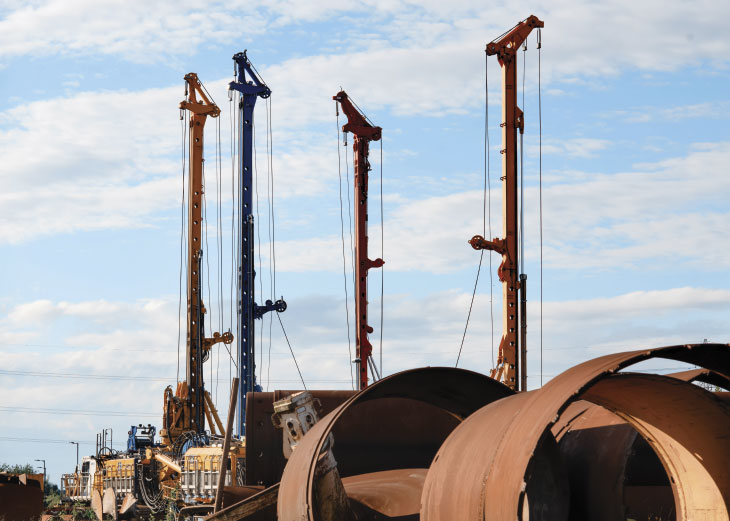

The landscape for construction equipment vehicle fleet companies in 2025 is marked by a maelstrom of escalating costs, forcing fleet and operations managers in construction to confront unprecedented challenges in maintaining profitability and operational efficiency.
Acquisition and leasing costs for heavy equipment and vocational trucks are projected to soar by 10 to 15 per cent, mirroring a similar jump of 12 to 15 per cent in insurance premiums. The price of spare parts, particularly for hydraulic systems, undercarriages and drivetrain components, is experiencing multiple hikes, with an eight per cent average increase, and the complexities of international trade, particularly with China, are further inflating expenses due to volatile exchange rates and tariffs.
This perfect storm of rising expenditure underscores an undeniable truth: accurate total cost of ownership (TCO) calculation is no longer merely a best practice; it’s a critical imperative for survival and strategic growth. In this volatile environment, the conventional approaches to TCO are proving woefully inadequate, leaving many construction fleets vulnerable to significant financial pitfalls.
The future, and indeed the present, demands a true shift toward advanced AI-powered TCO technology platforms that leverage predictive modelling, especially those possessing the crucial capability of being OEM data agnostic and incorporating cost and performance data of ancillary on-equipment systems like lift booms, screed heaters, auxiliary power units and other attachments that have their own TCO, usage, maintenance and repair profiles.
The frustrations of traditional TCO: a recipe for costly inaccuracies
Traditional construction fleet TCO methods, reliant on spreadsheets and manual calculations, are inefficient and riddled with costly inaccuracies. Without advanced AI and predictive modelling, construction equipment managers remain reactive, making decisions based on historical data that can’t keep pace with dynamic market and site conditions. This leads to underestimated expenses, budget overruns, suboptimal equipment choices and missed cost-saving opportunities.
The sheer volume of jobsite and equipment telematics data becomes a burden, causing data stagnation and blind spots. This problem is particularly acute for electric or hybrid construction equipment. Traditional TCO models, designed for internal combustion engine (ICE) equipment, fail to accurately factor in EV-specific costs like charging infrastructure for mobile jobsites, usage-based battery degradation affected by duty cycles and maintenance requirements under rough terrain or extreme environments.

Additionally, construction EVs face unique challenges such as fluctuating energy prices, limited access to fast-charging in remote locations, the need for specialized technician training and the unpredictability of battery life cycles – all of which can dramatically affect long-term costs if not properly modelled. Fleets adopting electric machinery without AI-driven TCO risk miscalculating true costs and undermining ESG goals, as legacy systems can’t handle the real-time forecasting needed for dynamic energy pricing, jobsite variability and battery technology progression.
The peril of OEM-specific data: impact on acquisition and insurance
The lack of OEM data agnosticism in many existing TCO platforms presents an even more nuanced problem, particularly concerning construction equipment acquisition and insurance costs. When a TCO platform is tied to specific OEM data, project and fleet managers are presented with a limited and potentially biased view of asset performance and cost-effectiveness, which can be slanted to favour a particular manufacturer. OEMs, naturally, have a vested interest in promoting their own products, and their provided data, while valuable, may not always offer the complete, unbiased picture required for truly objective decision-making.
This can lead to a reliance on information that, while technically accurate, might omit crucial comparative data points from other manufacturers, hindering a construction fleet’s ability to truly optimize its procurement strategies across brands and platforms. Without the ability to ingest and analyze data from all equipment manufacturers – a capability inherent in OEM-agnostic platforms – contractors and procurement leaders cannot conduct truly apples-to-apples comparisons across diverse equipment types and brands.
This limitation means they might inadvertently acquire machines that, while seemingly cost-effective upfront, prove more expensive over their life cycle due to higher maintenance needs, lower fuel efficiency or poorer resale value compared to alternative OEM offerings that were not properly evaluated.
The transition to a data-driven, predictive and OEM-agnostic approach represents a fundamental shift that empowers construction equipment managers to navigate the complexities of today’s volatile landscape.
The ramifications extend directly to insurance premiums. Insurance providers rely heavily on comprehensive, accurate data to assess risk and determine coverage costs. When a construction fleet’s TCO calculations are opaque or incomplete due to a lack of OEM-agnostic data, it becomes challenging to present a compelling, data-backed case for favourable insurance rates.
Insurers may perceive higher risk if they cannot fully understand the granular details of machine performance, service history, site-specific usage and operational efficiency across a mixed fleet. A system that can seamlessly integrate data from various OEMs provides a holistic view of the fleet’s health and operational patterns, enabling managers to demonstrate a proactive, data-driven approach to risk management.
This transparency, facilitated by OEM-agnostic AI, can be a powerful lever in negotiating lower premiums and securing more tailored insurance policies, directly impacting the bottom line. Conversely, a fragmented data landscape, often a byproduct of non-agnostic platforms, can lead to higher insurance costs as providers err on the side of caution when faced with incomplete information.
The power of AI-powered, OEM-agnostic TCO platforms
Advanced AI-powered TCO tech platforms are a game-changer for construction fleet management. Leveraging machine learning, they process vast data – jobsite telematics, equipment maintenance records, fuel usage, idle time, operator behaviour and external market variables – for unprecedented predictive accuracy. Imagine AI forecasting hydraulic pump or track component failures on an excavator, enabling proactive repairs and drastically reducing downtime and costs.
These platforms also optimize asset deployment and jobsite routing in real-time, cutting fuel consumption, reducing idle hours and ensuring that the right machine is at the right site with the right attachment. Crucially, their OEM data-agnostic nature means they analyze data from any equipment manufacturer. This neutrality is vital for diverse construction fleets, allowing objective comparisons of life cycle costs across ICE and electric equipment. Such unbiased insights empower strategic procurement, ensuring optimal choices for acquisition, uptime, efficiency and resale – ultimately securing better insurance rates and optimizing a fleet’s financial health.
Early adopters of these platforms have reported significant reductions in both maintenance and insurance costs – in some cases, achieving double-digit percentage savings within the first year – while also improving equipment uptime and operational transparency. This tangible ROI demonstrates the value of a data-driven, predictive approach for construction equipment fleets of all sizes.
The transition to a data-driven, predictive and OEM-agnostic approach represents a fundamental shift that empowers construction equipment managers to navigate the complexities of today’s volatile landscape, optimize every facet of their operations and secure a competitive edge in an increasingly challenging economic environment. The future of fleet and asset profitability in construction hinges on embracing the transformative power of AI to unlock true TCO intelligence.
Ian Gardner is the founder of EVAI, a cloud-based, AI-enabled platform for fleet electrification and management.